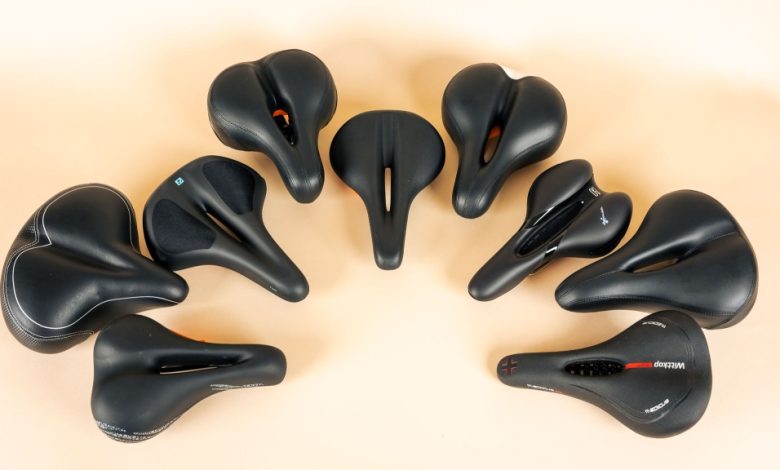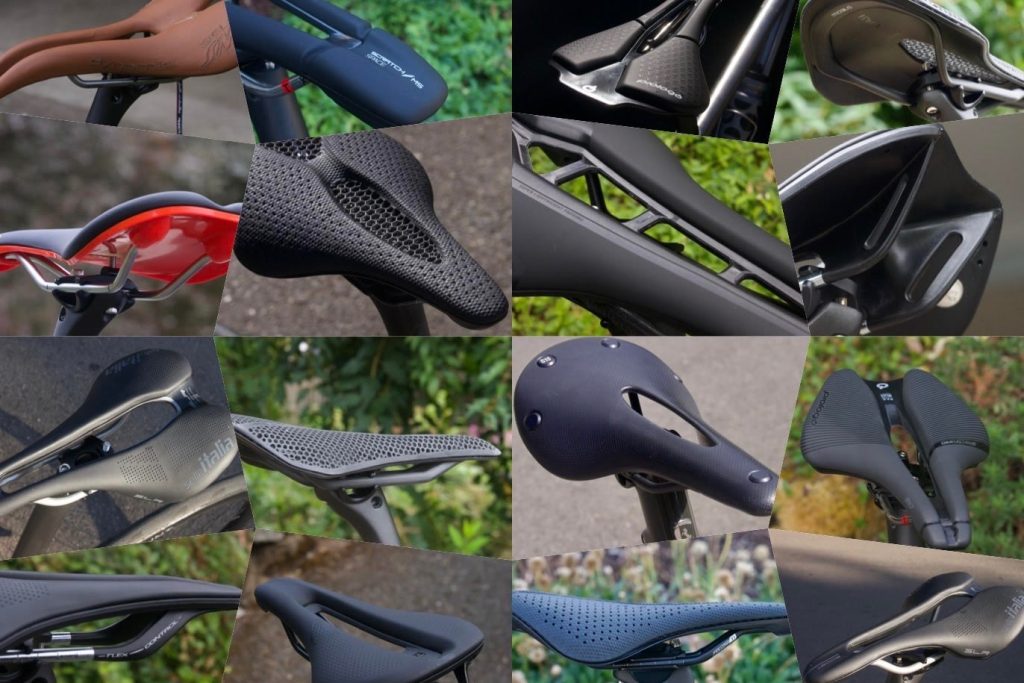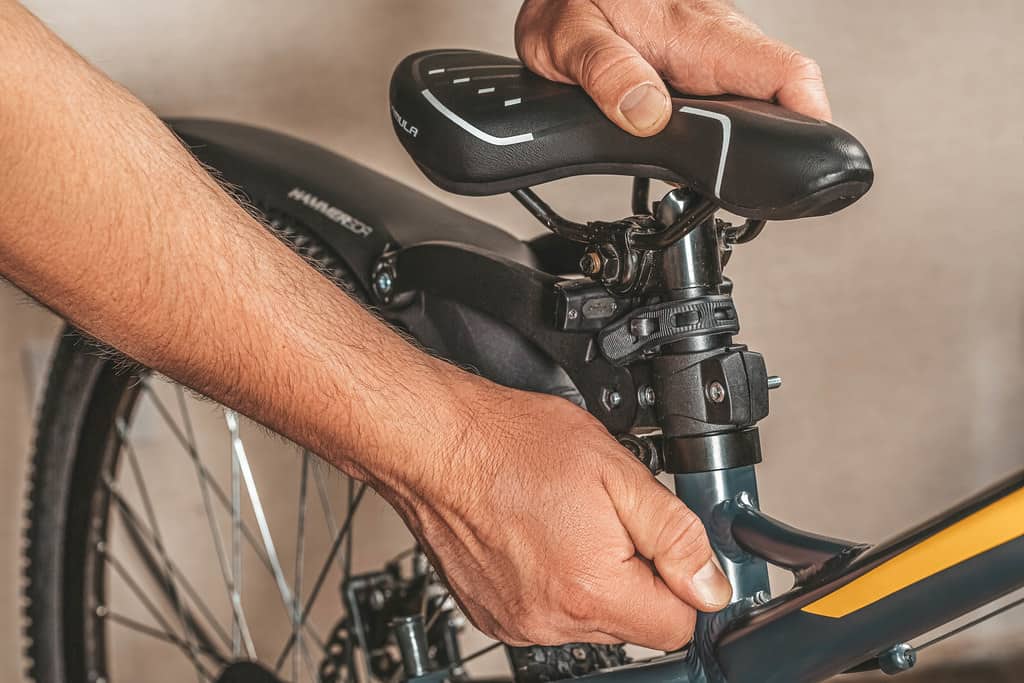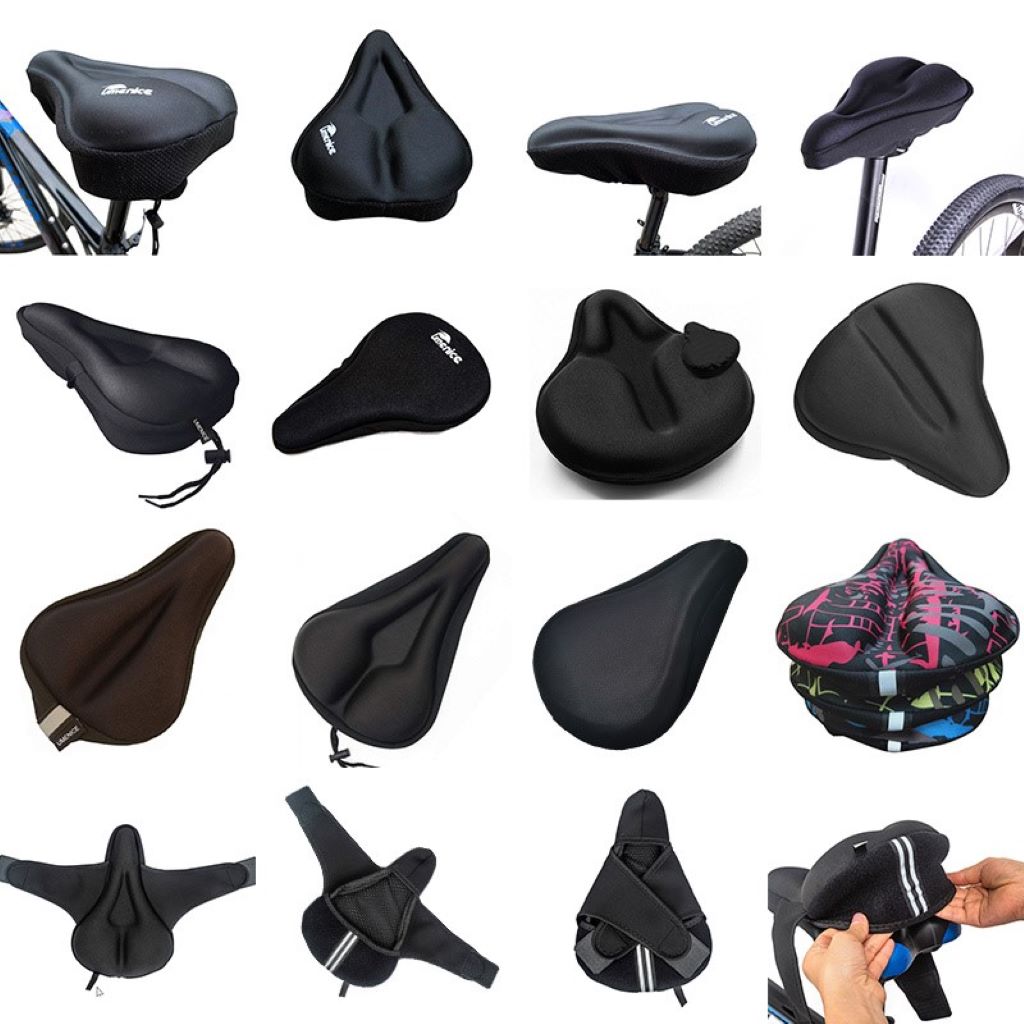What Do You Put on a Bike Seat for Comfort?

Riding a bike should be an enjoyable experience, but an uncomfortable bike seat can take the joy out of cycling. The good news is that there are several things you can put on your bike seat to make it more comfortable for the long haul. In this comprehensive guide, I’ll walk you through the various options so you can find the best solution for your needs and riding style.
Cushioned Bike Seat Covers
A cushioned cover is one of the most accessible and affordable ways to add comfort to your bike seat. These slip on top of your seat and provide extra padding and softness. Here are some top options:

Gel Pads
Gel bike seat covers are filled with a thick, molded gel that conforms to your body shape. The gel absorbs shock and reduces pressure on sensitive areas for a relaxing feel. Gel pads come in different thicknesses, from as thin as 1/8″ up to 1″ thick. Thicker gel pads provide more cushioning.
Popular brands like Bell, Planet Bike, and Bikeroo make high-quality gel covers. They have anti-slip rubber bottoms to keep the cover securely in place over your seat. Most gel pads have waterproof outer layers, so they won’t get soggy if you’re caught in the rain.
Gel pads work well for recreational cyclists or commuters who prefer a soft, plush seat. The gel distributes weight evenly to relieve pressure. The gel can feel great on short rides, but some find it too squishy for long distances.
Memory Foam Pads
For superior comfort and support, try memory foam pads. They conform to your shape like gel does but bounce back quicker and don’t flatten out over time. High-density memory foam maintains its structure better.
Memory foam comes in variable thickness and density for customizable cushioning, making it an ideal choice for enhancing the comfort of bike seats. Some covers, designed by reputable brands like Planet Bike, Domain Cycling, and Tonbux, feature channels or cutouts down the center to relieve pressure on sensitive nerves. For those seeking additional support, there is bike seat with backrest and armrest. Thinner memory foam is particularly beneficial for longer rides, offering a firmer feel and improved breathability, ensuring a more enjoyable cycling experience.
Dual Density Foam
Density foam covers offer an excellent compromise for comfort and support. They have a firm, high-density base layer topped with a softer, low-density cushion layer. This gives you cushioning for bumps and an underlying firmness to prevent sagging.
Dual-density covers also hold their shape well over time. And since the base is thinner, they don’t elevate you as high above the seat as thick gel pads. Popular options come from Cushy, Giddy Up, and Bikeroo.
Bike Seat Cushions
If you want more suspension than simple covers, bike seat cushions attach to your seat post or handlebars to provide extra shock absorption. Here are two designs that work great:
Suspension Seat Posts
These seat posts have integrated suspension that cushions every bump. They allow several inches of movement to take harshness out of the ride. Suspension posts like the BodyFloat and Cane Creek Thudbuster use elastomer springs or mechanical pivots.
Installing a suspension post dampens vibrations through your arms and legs for an ultra-smooth ride. It’s like having a tiny suspension system just for your seat. However, suspension posts significantly raise your saddle height, so you must adjust your bike fit.
Seat Post Suspension Springs
You can add suspension springs onto a standard seat post for a more budget-friendly option. Brands like Below the Saddle, Carbonleaf, and Sunlite make universal springs that fit most seat posts. Dual springs or leaf springs flex to absorb shock.
Springs are easy to install and remove as needed. They give you some vibration damping without altering your saddle height as much as suspension posts. However, the suspension effect isn’t quite as pronounced. So, springs may not work as well on bumpy terrain.

Specialty Bike Seat Designs
Upgrading to an anatomically designed bike seat can make a huge difference in comfort. Padded covers help, but the underlying seat shape plays a significant role, too. These specialty saddles alleviate pressure in all the right places:
Cutout Seats
Seats with a center cutout or channel down the middle help relieve pressure on sensitive nerves and soft tissues. Removing material right where your weight concentrates lets those areas breathe. Popular options like the Selle SMP and Prologo CPC target essential anatomy.
Cutouts come in different shapes, sizes, and depths to suit your needs. Broader and deeper channels give extra relief but reduce overall support. Make sure to choose a seat with adequate padding around the cutout.
Split Nose or Separated Seats
These seats look unusual, but their split-down-the-middle design works wonders. Separating the seat into two lobes liberates pressure points for both men and women. Examples like the ISM Adamo Road or Selle SMP DIVA naturally mimic the space between your sit bones.
Split noses come in varying widths to fit your sit bones properly. Wider saddles disperse weight better, while narrower ones allow more freedom of leg movement. The dipped channel keeps sensitive areas clear of contact.
Suspension Seats
Suspension technology built right into the saddle is the ultimate for reducing vibrations. Brands like BodyFloat, Selle Italia, and Suntour incorporate elastomers or springs into the saddle base. As you ride, the floating mechanism absorbs bumps to cushion your seat.
Suspension saddles allow an inch or more of movement straight under you. The springs stabilize the seat surface as the base flexes to isolate vibrations. Suspension seats work exceptionally well over rough terrain. The downside is a slight weight increase.
Extra Wide/Padded Seats
Extra wide and generously padded saddles help make rides comfy for a natural cushioned feel. Wider rear ends around 16-18cm provide ample surface area to support your sit bones without concentrating pressure.
Thicker padding over firm foam offers pillowy yet supportive comfort. Options like the Bikeroo Oversized seat or Planet Bike A.R.S. use premium materials to pamper your backside. The proper padding gives you cushioning that lasts versus squishing flat.
Specialty Bike Seat Materials
The materials used in a bike seat play a significant role in its feel and performance. Here are some standout materials often used to boost comfort:
Gel Padding
We’ve already talked about gel pad covers, but gel can be used inside the seat. Injected gel foam is molded right into the saddle for permanent cushiness. Seats like the Planet Bike ARS Classic have built-in gel pads to soak up vibrations.
Gel stays comfortable in any weather since it doesn’t get hard when cold or soften when hot. However, gel padding tends to flatten out and lose shock-absorbing abilities quicker than foam. It’s great for shorter rides.
Memory Foam
Quality memory foam bike seats retain their shape better long-term than gel. Memory foam seats like the Tonbux use premium molded foam to conform to your anatomy perfectly. It consistently rebounds after compressing.
Varying densities provide firm support beneath gentle cushioning. Memory foam reduces numbness on long rides by distributing weight evenly across the saddle. Its breathability keeps you cool, too.
EVA Foam
Ethylene-vinyl acetate (EVA) foam is a closed-cell foam famous for comfort and support. It has a naturally firm yet bouncy feel. EVA holds its structure well and resists compression over time. It also insulates against vibrations efficiently.
Many ergonomic saddles, like the Planet Bike Men’s A.R.S., incorporate EVA layers to cushion tiny bumps. EVA manages moisture well so that it won’t get waterlogged. Plus, it’s very lightweight. EVA foam offers comfort without sacrificing street performance.
Leather
Leather bike saddles ooze classic style on vintage bikes. But leather serves a functional purpose, too. It forms your shape for customized comfort and ages beautifully over time. Quality leather breaks in gradually and provides just the right amount of cushiness.
Seats like Brooks’ B-series use top-grain leather stretched across steel frames. The leather softens naturally from your body heat and sweat after a break-in period. Leather saddles acquire a custom mold that hugs your anatomy perfectly.
Handlebar Add-ons for Comfort
You can also add accessories to your bike’s handlebars to absorb shock through your hands:
Suspension Grips
Cushioned grips with internal suspension systems provide incredible comfort by damping vibrations before they reach your hands. Brands like Ergon and Lizard Skins make grips with elastomer springs or foam cushions inside.
Models like the Ergon GC1 BioKork grip different amounts of movement from 5-15mm for fine-tuned suspension. Softer rubber compounds add extra dampening, too.
Bar Ends
Bar end extensions provide extra hand positions to alleviate numbness and fatigue. Models like the Ergon GP-1 have contoured grips at the ends for grabbing onto. This lets you change up your grip intermittently.
The added positions let you lean forward and shift weight off your seat as needed. Bar ends to prevent your hands from bearing too much pressure in one position. Off-road handlebars have already been finished, but you can also add them onto straight-road bars.
Gel Handlebar Tape
Cushioned handlebar tape compresses to absorb vibrations before they reach your hands. Brands like Fizik and Fabric make tape with gel padding or memory foam backing. This dampens shocks from the front end.
Gel tape can save your hands and wrists from pounding on bumpy terrain. Choose minimalist designs like Fizik’s Superlight tape for low bulk. Make sure the tape is grippy enough for control. Gel tape cushions your ride from stem to stern.
Suspension Stems
Suspension bike stems feature internal mechanisms that absorb bump forces before reaching your arms. Models from manufacturers like Thudbuster, Cane Creek, and Redshift Sports have about 20mm of cushioned movement.
Suspension stems provide the most pronounced dampening effect. But they are one of the pricier options. Dual elastomers or mechanical pivots isolate vibrations at the source—your entire upper body benefits from the cushioned feel.
Saddle Height and Angle Adjustments

Dialing your saddle height and angle optimizes comfort by ensuring proper pelvic alignment. Here’s how to get the settings just right:
Saddle Height
Your leg should be almost fully extended with a slight bend at the bottom of your pedal stroke. A seat that is too low forces excessive knee bending that strains muscles. A chair that is too high overstretches your hips and causes numbness.
A quick way to gauge height is to place your heel on the pedal with your hip straight. Adjust the seat height so your leg is completely straight. For fine-tuning, a professional bike fit helps optimize comfort.
Saddle Angle
Tip the nose of your saddle down just slightly so you don’t slide forward as you ride. A level seat or one tilted up causes you to push backward, constantly increasing strainnt strain. Angle the nose down just 1-2 degrees so you stay planted.
Your pelvis rolls naturally as you pedal. The right angle keeps you in the optimal pain-free range of motion. Experiment with micro-adjustments. Too much downward tilt can cause issues, so find the sweet spot.
Proper Bike Fit
Getting professionally fit for your bike goes a long way for comfort and efficiency. An expert fitter will dial in all the critical dimensions so you avoid injury and pain:
- Saddle height and setback
- Handlebar height and reach
- Cleat position
- Handlebar width
- Stem length
- Seatpost offset
Adjustments are made based on flexibility, anatomical proportions, and riding style. Things like lower back arch and hip angle are accounted for. Expect to spend about an hour test-riding while the fitter makes tweaks.
A proper bike fit helps you maintain good form for more muscular riding and less overuse issues. It’s worth the investment for comfort on long rides.
Improve Your Riding Position
How you position yourself on the bike makes a significant impact on comfort. Avoid these joint discomfort causes:
Reaching Too Far
Avoid overextending your back and straining your neck and shoulders. Ensure your saddle is pushed back far enough behind the pedals so you don’t have to stretch out uncomfortably. Your upper body should feel relaxed.
Gripping Too Tight
Keep a gentle, relaxed grip on the handlebars without squeezing too tight or locking your elbows. This reduces tension in your shoulders and arms, which can cut off circulation. Shake your limbs out periodically.
Hunching Over
Don’t collapse your upper body by rounding your back and crunching your abdomen. Maintain a straight back with an open chest and engaged core. Sliding forward compresses your soft tissues and nerves.
Pedaling Wrong
Pedal in smooth circles with your feet level instead of mashing or pointed toes, which strains muscles. Engage your glutes and hamstrings evenly, so you don’t overload your quads. Proper pedaling protects your knees.
You can train your body to hold better form for comfortable long-distance riding with practice. Core strength helps you maintain proper positioning, too.
Adjust Your Training
It’s easy to overdo it if you ramp up your mileage or intensity too drastically on a new bike. Pace your training smartly:
- Start with shorter rides before longer distances to condition your body gradually.
- Include rest days with light activity between rides to allow muscles to recover.
- Build intensity slowly with intervals versus sustained efforts immediately to avoid overuse injuries.
- Stretch pre and post-ride, focusing on the lower back, hamstrings, glutes, and hips.
- Strengthen your core with off-bike exercises to support your lower back.
- Stay hydrated and fuel up properly during rides to prevent muscle fatigue.
Listening to your body and dialing back when you feel pain will keep you riding happy and pain-free.
Cushioned Cycling Shorts and Pants
Good padding in the right places can make a difference in comfort. Cycling-specific shorts and pants have strategic foam padding sewn into the liner shorts against your skin. This reduces pressure and chafing in sensitive areas.
The best pads use multi-density, molded foam to cushion your sit bones and soft tissues. Thicker pads help on bumpy trails—top brands like Pearl Izumi, Gore, and Castelli also engineer the padding for efficient moisture-wicking,
Look for dense, contoured foam in a width matching your sit bones for long rides. Seamless edges prevent chafe points. Well-fitting shorts with your saddle dialed-in work magic.
Chamois Cream
Chamois cream is like a protective barrier for your skin. It reduces friction and wicks moisture to prevent chafing and hot spots. Apply it directly onto areas prone to rubbing before longer rides.
Chamois cream contains conditioning ingredients like aloe, vitamin E, and antimicrobials to keep your skin resilient. Formulas smooth the skin seamlessly. Brands like Chamois Butt’r, DZ Nuts, and Udderly Smooth are famous for relieving chafe.
Using chamois cream with padded cycling shorts gives you double protection. Reapply as needed for multi-hour rides. It’s a simple way to enjoy many more miles in total comfort!
Maintain Proper Bike Fitness
No padding will compensate for a poorly adjusted bike or weak riding muscles. Follow these tips:
- Get a professional bike fitting periodically as your flexibility changes.
- Keep your bike well-maintained with routine tune-ups for optimal performance.
- Build cycling-specific strength in your core, glutes, quads, and hamstrings.
- Stretch before AND after rides to keep muscles supple.
- Check saddle height, handlebar position, and cleat angle regularly for adjustments.
- Ride regularly to condition your body to the cycling position.
Optimizing your bike AND body provides the best foundation for comfortable, pain-free riding every time.
Consider Shock-Absorbing Accessories
For rides on rough terrain, shock-absorbing accessories can smooth out the bumps:
Suspension Seatpost
A seatpost with integrated suspension allows the saddle to move independently from the frame. This isolates bumps below you so they don’t rattle up your spine. Great for mountain biking.
Suspension Stem
Stems with micro-suspension in the joint where it clamps to the fork absorb road buzz and big hits before they reach your upper body. Reduces neck and arm fatigue.
Bar Tape
Extra-cushy padded handlebar tape creates a comfortable grip. Gel inserts reduce vibrations to reduce hand numbness on bumpy sections.
Full-Suspension Bike
A complete suspension mountain bike has front and rear systems built into the frame. Dual suspension smooths out trails remarkably, keeping you in control.

Clothing and Accessories for Cold Weather Comfort
When riding in colder temperatures, the proper clothing makes all the difference in comfort. Use these gear tips:
Windproof Jacket
A windproof cycling jacket blocks chilling winds from sapping your body heat. Look for a close-fitting performance cut to Layer over other clothes.
Thermal Bib Tights
Insulated bib tights keep your thighs and legs toasty warm. Look for fleece-lined or thermal reflective materials to maintain warmth and wick moisture.
Lobster Claw Gloves
Lobster claw gloves are perfect for cold weather, with fingers grouped for warmth but thumbs separate for grip and braking.
Toe Covers
Neoprene toe covers insulate your feet and block wind. They stretch over the front of your cycling shoes.
Balaclava
A balaclava protects your head, face, and neck from frigid temps. Get one with windproof fabric but ventilation over the mouth so your breath can escape.
Booties
Neoprene booties go over your shoes and seal out drafts. They have reinforced bottoms for pedaling traction. Great for keeping feet warm and dry.
Arm Warmers
Arm sleeves add warmth for mild days. Stretchy designs match your cycling jerseys and pull on easily. You can remove them when you climb.
Thermal Vest
A thermal vest or gilet is ideal for cool but not freezing rides. Vest insulation warms your core without restricting leg movement.
Wool Socks
Thick wool cycling socks insulate and wick moisture better than cotton to keep your feet warmer and prevent hot spots.
Shoe Covers
Completely waterproof cycling shoe covers to keep feet dry in wet conditions. They seal out rain and road spray for warm, dry feet.
Hand Warmers
Disposable hand warmer packets heat up when exposed to air. Tuck them in your gloves or pockets for natural radiant warmth.
Hot Packs
Reusable HotHands packs activate when clicked. You can place them in gloves or against the body for soothing heat.
The proper cold-weather gear enables you to ride safely through winter. Layer intelligently and block wind and moisture.
Maintain Proper Posture
Your riding posture significantly impacts comfort and efficiency:
- Keep your back straight, shoulders relaxed, and eyes up to reduce strain.
- Avoid slouching or rounding your shoulders, and maintain good spinal alignment.
- Support some of your upper body weight with your core instead of pushing down on your hands.
- Change hand positions regularly and shake out limbs to prevent numbness.
- Pedal smoothly in circles without mashing or pointing toes to activate different muscle groups.
- Stand up periodically on the pedals to give your backside a break from the saddle.
- Shift forward slightly and periodically onto the narrower part of the seat to alter pressure points.
With practice, you can train your body to hold an optimal posture that minimizes discomfort naturally.
Choose the Right Saddle Width

Selecting a saddle that matches the distance between your sit bones helps optimize comfort and support:
- Too narrow of a saddle will lead to bone pain and numbness as your weight presses down unevenly.
- Too broad of a saddle causes chafing from side-to-side rubbing.
Use a measuring device to find your sit bone width and choose a saddle with a rear width that matches closely. Around 120mm is average for men and 110mm for women.
Wider saddles provide cushioning, while narrower designs allow more effortless thigh movement without chafing. Dialing in saddle width prevents hot spots.
FAQs
What is the most cushioned bike seat?
Some of the most cushioned bike seats include the Bikeroo Oversized Bike Seat, Planet Bike ARS Classic Gel Bike Seat, and the DT Swiss Suspension Bike Seat. They use thick gel padding, dual-density memory foam, and integrated suspension for maximum plushness.
What can I put under my bike seat for more comfort?
You can put gel seat pads, memory foam pads, or dual-density foam pads under your bike seat cover for extra comfort. Suspension seat posts and seat post springs also help cushion bumps underneath you.
How do I make my bike seat more comfortable for long rides?
For a more comfortable bike seat on long rides, use a quality saddle explicitly designed for distance, like a split nose, cutout, or extra padded model. Adjust it to the optimal height and angle for your body. Wear padded cycling shorts and use chamois cream. Firmly condition your backside with increasing mileage.
Can I put a more prominent seat on my bike?
You can install a minent, wider bike seat on most standard seat posts. Measure the interior diameter of the seat tube on your bike frame and the seat post head’s diameter to ensure the clamp will fit properly. An oversized saddle provides more surface area to support your sit bones.
What material is best for a bike seat?
The most comfortable bike seat materials include gel, memory, EVA, and leather. Gel and memory foam conforms to your shape while providing cushioning. EVA foam supports firmly with bounce. Leather forms perfectly to your anatomy over time. Each material has its blend of comfort and support.
In summary, there are many ways to make your bike seat more comfortable for pain-free riding. Experience four vital health benefits when cycling on a bike, enhanced by cushioning products like gel covers, foam pads, and specialty saddles for extra plushness, along with suspension seat posts and springs to smoothly isolate bumps underneath you. Perfecting your saddle height, angle, and riding posture also prevents discomfort. With the right bike fit, padded shorts, proper conditioning, and innovative accessories, you can customize the comfort level of any bike seat.


